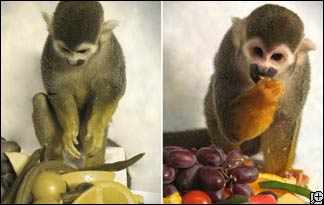
Scientists cure colour blindness in monkeys - humans next?
Researchers have delivered promising results by successfully treating two squirrel monkeys with defective colour perception using a gene therapy that could also safely eradicate colour blindness in humans. Millions of people around the world, including 3.5 million Americans, 13 million people in India and 16 million in China, are affected by colour blindness. It is a congenital problem, largely experienced by men, that renders its sufferers incapable of discerning mainly red and green hues: seemingly trivial but, in reality, a necessity for everyday practicalities such as recognizing traffic lights.
According to Jay Neitz, professor of ophthalmology at the University of Washington, “Nothing happened for the first 20 weeks…but we knew right away when it began to work. It was as if they woke up and saw these new colours. The treated animals unquestionably responded to colours that had (previously) been invisible to them.” It has taken more than 18 months of testing the monkeys' ability to discern 16 hues, with some varying as much as 11-fold in intensity. The monkeys were able to trace colour patterns on a computer touch screen and, when they chose correctly, they were rewarded with grape juice.
Read more at: http://www.gizmag.com/scientists-cure-color-blindness-in-monkeys/12881/?utm_source=Gizmag+Subscribers&utm_campaign=2f43e924c1-UA-2235360-4&utm_medium=email




![Reblog this post [with Zemanta]](http://img.zemanta.com/reblog_e.png?x-id=0a09d301-6990-41cb-8767-a9132de10d50)


